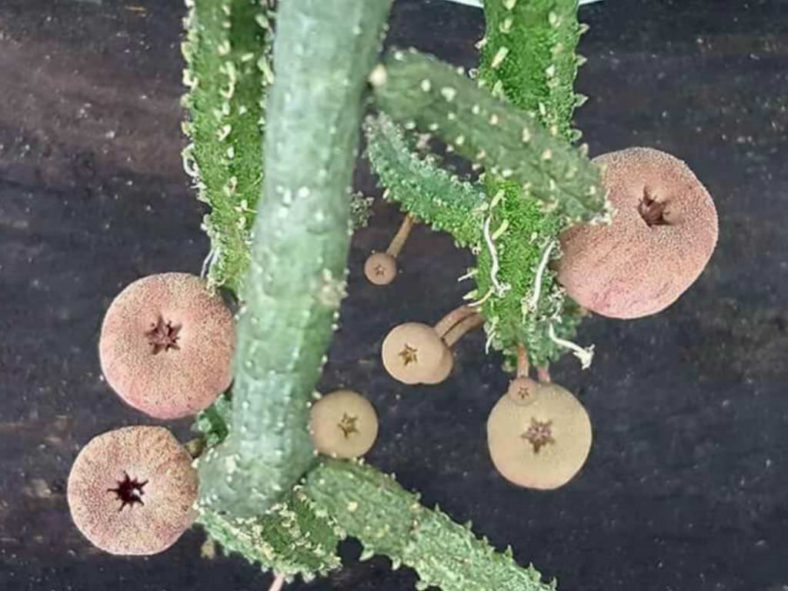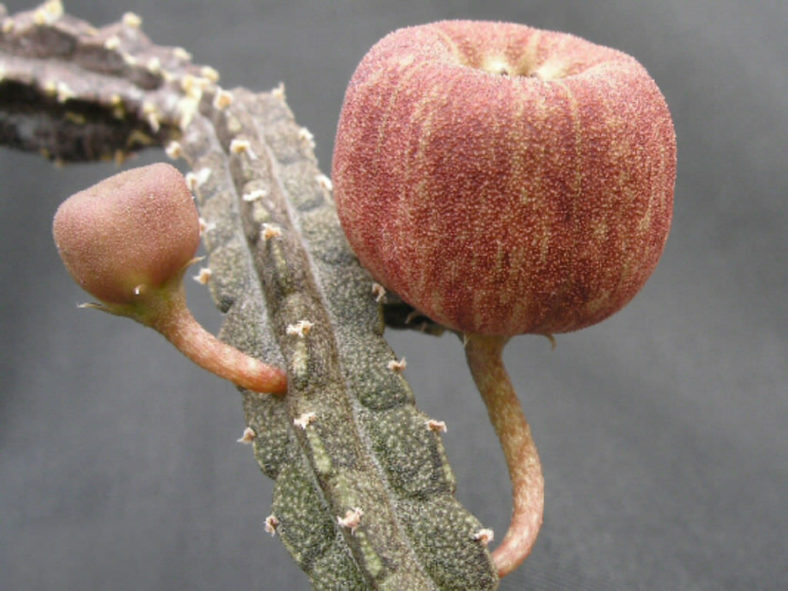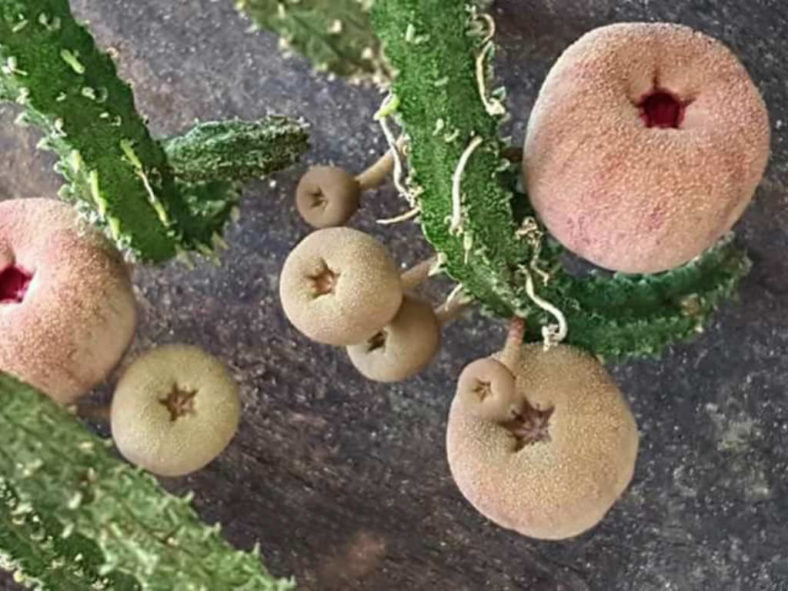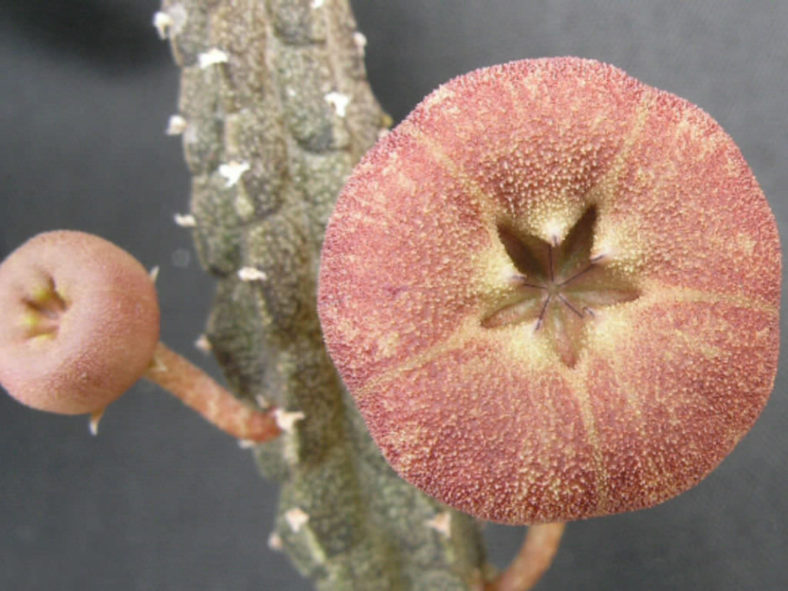Scientific Name
Echidnopsis malum (Lavranos) Bruyns
Synonym(s)
Ceropegia malum, Pseudopectinaria malum
Scientific Classification
Family: Apocynaceae
Subfamily: Asclepiadoideae
Tribe: Stapeliae
Genus: Echidnopsis
Etymology
The specific epithet "malum" (pronounced "MAY-lum") means "apple" and refers to the apple-shaped flowers of this species.
Origin
Echidnopsis malum is native to Somalia, Kenya, and Ethiopia. It grows at elevations from near sea level to about 4,100 feet (1,250 m).
Description
Echidnopsis malum, formerly known as Pseudopectinaria malum, is a small succulent with grey-green or brownish stems with 5 to 6 angles, indistinctly divided into low rectangular tubercles. The stems can grow up to 15 cm long, sometimes more, and 0.4 inches (1 cm) thick.
The flowers are spherical, depressed with a small pentagonal opening at the apex, and appear upright on short stalks that can reach a length of 0.6 inches (1.5 cm). Outside, they are finely hairy and green with purple markings, while on the inside, they are dark purple-red, with long white hairs in the lower and upper parts. The middle portion is sparsely tuberculate. The outer corona is golden yellow.

Hardiness
USDA hardiness zone 10a to 11b: from 30°F (1.1°C) to 50°F (10°C).
How to Grow and Care
Stapeliads are relatively easy to grow. However, they should be treated as outdoor plants as they will easily rot indoors and cannot flower without exposure to outdoor temperature fluctuations. They should be grown under cover so that watering can be controlled. They require a reasonable amount of sunlight to promote flowering and maintain a well-shaped plant. Very shady positions will produce very poor flowering. Stapeliads originate from climates where they thrive in extremely high temperatures during the summer months, resulting in most growth occurring in spring and fall, with flowering typically taking place in fall as the weather begins to cool down. Water in moderation when needed during the growing season, ensuring the soil is pretty dry between waterings. Do not water between November 1 and March 1.
The easiest and best way to propagate Stapeliads is from stem cuttings, which can be taken virtually throughout the year. Seed is also a method of propagation.
See more at How to Grow and Care for Stapeliads.
Links
- Back to genus Echidnopsis
- Succupedia: Browse succulents by Scientific Name, Common Name, Genus, Family, USDA Hardiness Zone, Origin, or cacti by Genus
Photo Gallery
Click on a photo to see a larger version.


